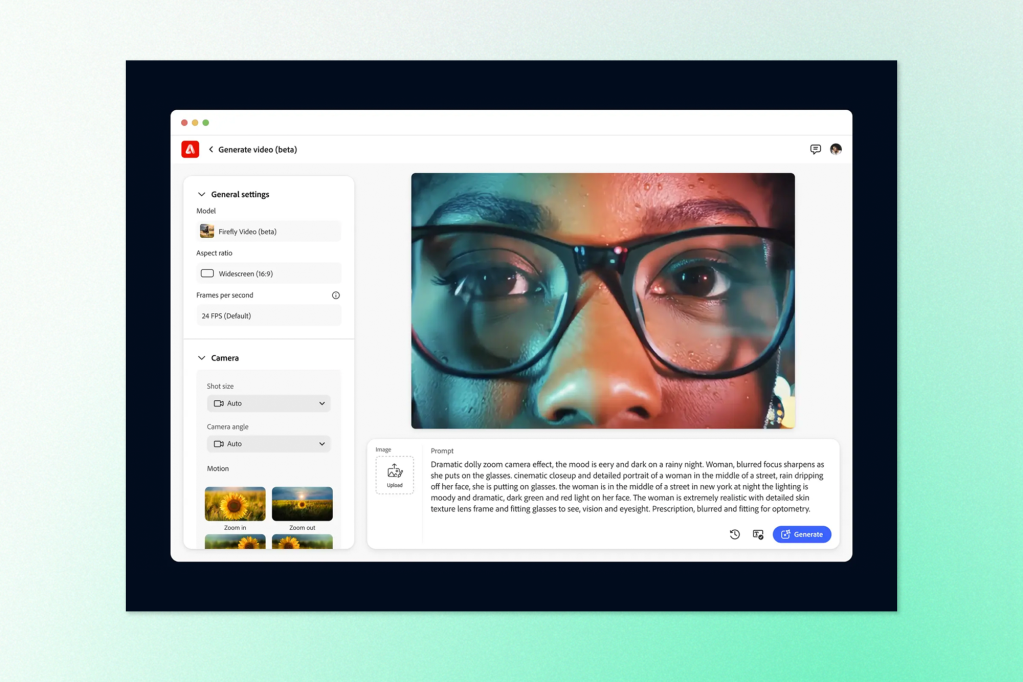This week in AI and technology, we spotlight OpenAI’s introduction of self-reasoning models designed to elevate complex problem-solving accuracy, Runway’s launch of a transformative API for video generation, and Adobe’s advancement of generative AI within video editing workflows. Additionally, we explore TheyDo’s innovative use of AI to revolutionize business operations through optimized customer journey management,
OpenAI Introduces o1: A Self-Reasoning AI Model for Enhanced Accuracy
OpenAI has introduced the o1 series, a set of AI models designed to enhance complex reasoning and problem-solving capabilities. These models are trained to spend more time “thinking” before generating responses, allowing them to tackle challenging tasks in science, coding, math, and more.
The o1 models are engineered to refine their thought processes, explore different strategies, and recognize mistakes during training. This approach enables them to solve more complex problems than previous models.

Two Models with Distinct Strengths
The initial release includes two models:
1. o1-preview: This standard model showcases the full range of the o1 series’ reasoning abilities. It’s designed for complex problem-solving in various domains, such as physics, chemistry, biology, and advanced mathematics.
2. o1-mini: This is a smaller, more efficient version aimed specifically at code generation. While it may not have all the advanced reasoning features of o1-preview, it’s optimized for developers who need quick and efficient coding assistance.
Who Can Benefit
The o1 models are handy for professionals and researchers tackling complex problems in various fields. Examples include:
– Healthcare Researchers: Annotating cell sequencing data with greater accuracy.
– Physicists: Generating complex mathematical formulas for advanced studies like quantum optics.
– Developers: Building and executing multi-step workflows in programming and data analysis.
Availability and Limitations
While the o1-preview model represents a significant advancement in AI capabilities, it currently lacks some features that make other models like GPT-4o useful, such as:
– Web Browsing: The ability to search for real-time information online.
– File and Image Uploads: Currently, the model does not support uploading external files or images.
GPT-4o may still be more suitable for many common applications in the near term. However, for complex reasoning tasks, the o1 series marks a significant step forward in AI technology.
Runway Launches API to Integrate Video-Generating AI Models into Third-Party Platforms
Runway, a frontrunner in AI-powered video generation, has unveiled a new API enabling developers and organizations to embed its cutting-edge video-generating models directly into their applications and services. Currently in limited access through a waitlist, the API offers access to the Gen-3 Alpha Turbo model—a faster, more efficient version of Runway’s flagship Gen-3 Alpha.

The API comes with two plans: Build, aimed at individuals and small teams, and Enterprise, designed for larger organizations. Early adopters like marketing giant Omnicom are already exploring the possibilities of this integration. Unique to Runway’s API is a requirement for applications to display a “Powered by Runway” banner, promoting transparency about the technology’s origins.
The launch highlights ongoing legal and ethical discussions surrounding the training data used for these AI models. Questions persist about whether the data includes copyrighted material, a concern that Runway, like many of its peers, has yet to address fully.
Adobe Introduces Firefly Video Model: Generative AI Comes to Video Editing
Adobe has announced the upcoming release of its Firefly Video Model, a generative AI tool designed to enhance video editing workflows. Building on the success of its Firefly models in imaging, design, and vectors—which have powered popular features like Generative Fill in Photoshop and Generative Remove in Lightroom—the new video model aims to bring similar innovation to Adobe’s industry-leading video tools like Premiere Pro.

Some of the capabilities demonstrated include:
– Text-to-Video: Generate video clips from text prompts, complete with camera movements and lighting effects.
– Image-to-Video: Transform still images or illustrations into live-action clips.
– Generative Extend: Extend clips to cover gaps, smooth transitions, or adjust timing to match audio cues.
Empowering Video Creators with AI
The AI-powered features are designed to tackle common editorial tasks such as:
– Filling gaps in footage using text prompts and reference images.
– Easily removing unwanted objects from a scene without compromising video quality.
– Applying seamless transitions to enhance narrative flow.
– Utilizing rich camera settings like angle, motion, and zoom to achieve the perfect perspective.
Commercially Safe and User-Friendly
Adobe emphasizes that the Firefly Video Model is designed with creators’ rights in mind. The model is trained only on content that Adobe has permission to use, ensuring that generated videos are commercially safe. This commitment allows creators to confidently produce content, knowing that intellectual property rights are respected.
Availability and Beta Testing
The Firefly Video Model is expected to be available in beta later this year. Adobe encourages interested users to join the waitlist to gain early access and provide feedback.
Weekly Tech Highlight: TheyDo – Powering Business Success Through Journey AI
TheyDo transforms how businesses manage customer experiences by aligning strategy, planning, and delivery around customer journeys—the key to driving customer-centric change. With their innovative platform, companies can map, structure, and optimize every step of the customer journey to boost engagement and productivity.
Streamline Journey Mapping with Journey AI
TheyDo’s Journey AI helps businesses map and manage customer journeys efficiently, turning research into actionable insights. This system allows for:
– Rapid Journey Mapping: Instantly mapping customer interactions to understand and optimize every touchpoint.
– Unified Journey Framework: Organizing all customer journeys within a coherent framework everyone can understand and follow.
– Opportunity Discovery: Highlighting key opportunities within these journeys to set business goals and drive impactful results.
Key Features for Businesses
– Customer-Centric Operations: Build a unified approach to journey management at the core of your business.
– High ROI Initiatives: Uncover and prioritize top customer needs for maximum impact.
– Faster Time to Market: Streamline cross-team collaboration to reduce delivery time.
Leading companies worldwide trust TheyDo for journey mapping, including giants like Ford, Cisco, Home Depot, Johnson & Johnson, and Brussels Airport.
Keep ahead of the curve – join our community today!
Follow us for the latest discoveries, innovations, and discussions that shape the world of artificial intelligence.



